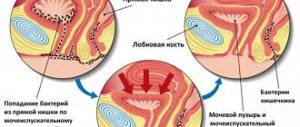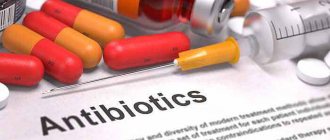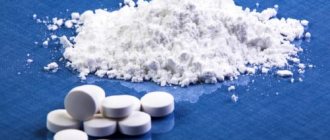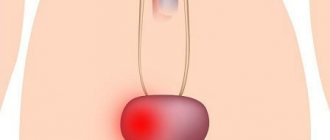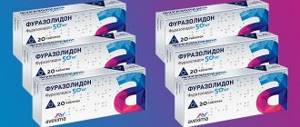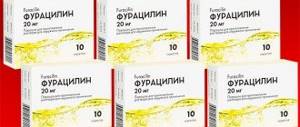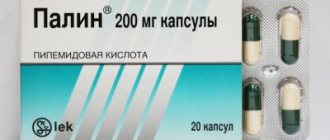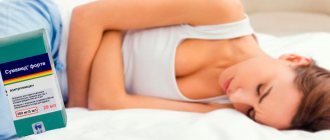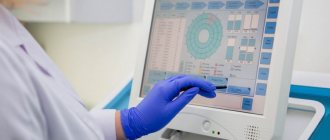Ofloxacin for cystitis is prescribed in cases where it is not possible to get rid of the inflammatory process in the bladder without the use of antibiotics. This antimicrobial drug belongs to the group of fluoroquinolones. It allows you to effectively and quickly eliminate the main symptoms of cystitis and prevent its further progression.
Self-medication with Ofloxacin may result in a number of side effects. To get rid of cystitis without causing harm to health, you should take the drug only as prescribed by a urologist.
Does it help in the treatment of cystitis in women?
Since cystitis is a disease that predominantly affects women, it is necessary to understand whether Ofloxacin helps in the treatment of bladder inflammation in women. As a rule, after completing a full course of these antibiotics, all symptoms of cystitis completely disappear in the patient and urine test results are normalized.
The high effectiveness of Ofloxacin is explained by the fact that this drug has the following advantages:
- acts directly on the lesion, the main component in maximum concentration can accumulate in the urine;
- high bactericidal activity;
- well absorbed in the digestive tract;
- can be taken simultaneously with other antibacterial drugs, therefore can be successfully used as part of complex therapy;
- does not have a harmful effect on the liver, is excreted by the kidneys;
- unlike other antibiotics, it has a more gentle composition and is relatively safe for health;
- high bioavailability.
Despite the many positive aspects of using the medication, you cannot start using it without permission. The duration, daily dose, and dosage schedule are determined only by the doctor.
When the use of NSAIDs in the fight against bladder inflammation is insufficient or ineffective, the doctor prescribes antibiotic therapy.
Choosing the most appropriate medication for each clinical case is the key to quickly eliminating discomfort, unpleasant symptoms and returning to a normal rhythm of life.
In complex treatment, a special role is given to antimicrobial agents, one of which is “Ofloxacin”.
How to relieve pain from cystitis: a review of drugs and treatment procedures
Inflammation of the bladder is accompanied by pain and discomfort in everyday life. Frequent urge to urinate, cramping pain in the lower abdomen and lumbar region are just a few of the characteristic symptoms that accompany the disease. Painkillers for cystitis are an important component of drug therapy, but it is necessary to understand that only comprehensive treatment will permanently get rid of the pathology and its accompanying symptoms. Let's understand the nature of the disease, consider how to quickly relieve pain and stop the inflammatory process.
Etiology and diagnosis
In most cases, cystitis is secondary and develops against the background of chronic pathologies of the genitourinary system and kidneys. Predisposing risk factors are:
- infection after surgery;
- anatomical features of the urethra in women;
- concomitant diseases of the genital area;
- weakened immune system;
- diabetes;
- the presence of stones in the kidneys and urinary tract.
The diagnosis is made based on medical history, laboratory test results, and ultrasound. In some cases, an endoscopic examination is performed - cystoscopy.
Complex therapy
The main goal of treatment is to quickly relieve the symptoms of cystitis, get rid of the bacterial pathogen and prevent relapse of the disease. An adequate therapeutic regimen involves the use of the following drugs:
- Broad-spectrum antibiotics of the fluoroquinolone group: Monural, Norfloxacin, Nolitsin, Tsiprinol, Ofloxacin. They are used in short courses (1–3) days to relieve acute uncomplicated infections in patients without risk factors, which include age, pregnancy, and a history of other diseases.
- Antibacterial agents of the penicillin, sulfonamide and nitrufurin series: Fosmomycin, Amoxiclav, Gentamicin. Used according to indications as an alternative treatment for cystitis, they have a high safety profile, but require longer use - from 5 to 10 days, depending on the severity of the condition.
- Antispasmodics and non-steroidal anti-inflammatory drugs (NSAIDs). Effectively relieve pain due to cystitis, relax spasmodic pelvic floor muscles, and stop inflammatory processes.
- Antihistamines - Tavegil, Suprastin, etc.
- Immunomodulators of both synthetic and natural origin: Amiksin, Avonex, Immunal, Imudon, Derinat, tinctures of ginseng and eleutherococcus.
Scientific fact! More than 60% of patients ignore complex drug treatment, which leads to a recurrent course of the disease, functional and organic changes in the walls of the bladder.
Localization of pain during cystitis as a guide to action
Acute cystitis is accompanied by pain and, although the cornerstone of the treatment process is the use of antibacterial drugs. Question: “How to quickly relieve unpleasant symptoms and maintain mental health?” is one of the most important tasks on the path to getting rid of the disease. It should be understood that the intensity and localization of pain during cystitis indicates the severity of the processes occurring in the urinary system:
- As inflammation spreads, pain is localized in the lumbar region, gradually covering the perineum and anal canal.
- Pain when urinating is a symptom characteristic of both acute cystitis and its recurrent course.
- Urinary incontinence, accompanied by cramps in the lower abdomen, is observed in complicated stages of the disease.
Since the effect of antibiotics has a cumulative effect and does not appear earlier than after a few days, the answer to the question: “How to relieve pain with cystitis?”
Basic drugs for relieving spastic pain during exacerbation of cystitis
Let us dwell in detail on painkillers that can quickly and effectively relieve pain and relieve the unpleasant manifestations of cystitis.
- Combined drugs: Trigan-D, Dolospa Tabs, Spazmalgon. Containing paracetamol, a non-narcotic analgesic, dicycloverine or pitofenone hydrochloride, they have an anticholinergic and smooth muscle relaxant effect. Available in tablet and injection form.
- Drotaverine (No-shpa), Papaverine, Nikoshpan - a group of antispasmodic drugs. The action is aimed at relaxing smooth muscles and blood vessels, which promotes painless outflow of urine and temporary relief of the condition. In combination with anti-inflammatory and antibacterial drugs, they effectively eliminate pain, swelling of the mucous membrane, and restore urinary function.
- NSAIDs with a pronounced anti-inflammatory and analgesic effect: Ketanol, Nimesulide, Next, Ibuklin. Medicines in this group must be treated with extreme caution.
- Rectal and vaginal suppositories are used as part of complex therapy, as pain relievers for cystitis in women. They effectively relieve pain and spasms and have local antibacterial, anti-inflammatory and antioxidant effects. Candles are distinguished:
- With papaverine, belladonna extract or from red grape seeds - effective for relieving pain in chronic processes.
- NSAIDs with diclofenac sodium (Voltaren, Diclofenac) are intended for symptomatic therapy, relief of pain and inflammation in the acute stages of cystitis.
The effect of painkillers and antispasmodics appears 20–30 minutes after administration and lasts 6–8 hours. Symptomatic medications are used under the supervision of a physician, for no more than 3–5 days. Particular caution should be exercised by patients suffering from chronic pathologies of the cardiovascular system, gastrointestinal tract, and endocrine pathologies.
Physiotherapy
In chronic cystitis, pain relief is the primary goal of comprehensive treatment. In some cases, with justified contraindications and the body's resistance to antibiotics, physiotherapy is successfully used. The procedures are aimed at pain relief, relaxation of the muscle fibers of the genitourinary system and relief of the inflammatory process. The following physiotherapeutic methods are considered:
- magnetotherapy – based on the action of magnetic fields and is widely used during the rehabilitation period;
- transcutaneous electrical neurostimulation (short-pulse electroanalgesia) – has an analgesic effect and increases local blood flow;
- electrophoresis - the procedure is aimed at ensuring the delivery of medicine to the affected areas, eliminating swelling of the bladder mucosa and excretory tract;
- EHF therapy is based on the influence of a high-frequency electromagnetic field, has a targeted effect on the site of the disease and is distinguished by its effectiveness.
The course of alternative treatment ranges from 8 to 15 procedures. Contraindications are pregnancy, cardiovascular and endocrinological diseases, inflammatory processes in the acute stage, oncology.
Folk remedies
How to relieve pain from cystitis as part of home treatment if qualified medical care is temporarily unavailable for a number of reasons? You can adhere to the following recommendations:
- Prepare a decoction of calendula and chamomile, taken in equal proportions. Pour the product, which has cooled to a comfortable temperature, into a wide basin and take a sitz bath. The method allows you to relieve spastic pain for several hours.
- Place a warm heating pad on the lower abdomen or perineum area and hold until it cools down or the pain subsides.
- How to get rid of symptoms that have a bacterial ethology? Doctors recommend maintaining a drinking regime and, in the absence of contraindications, the amount of liquid should tend to three liters. During the day, you need to drink a decoction of bearberry (100 ml 15-20 minutes before meals), rosehip tea, cranberry juice or fruit drink.
Health Recipes
With long-term antibiotic therapy for cystitis, an increase in the resistance of microorganisms to drugs is observed. In this case, the inflammatory process takes a chronic course and is difficult to respond to traditional drugs. Natural herbal remedies will come to the rescue: kidney tea, Brusniver herbal tea, as well as self-prepared decoctions.
Recipe No. 1
1 tbsp. l. Pour bear ears (bearberry) into a thermos, pour 300 ml of boiling water, let it brew for at least two hours. The decoction is taken 4-5 times a day, 50 ml after meals.
Recipe No. 2
1 tbsp. l. St. John's wort inflorescences pour two glasses of boiling water. After a few hours, filter the broth and take ¼ cup three times.
Recipe No. 3
Tea made from horsetail, chamomile and calendula inflorescences will help reduce symptomatic manifestations of cystitis. All components are taken in equal proportions.
Modern medicine offers a large number of medicines, dietary supplements and herbal remedies that are affordable to a wide range of consumers. It is important to understand that painkillers and antispasmodics for cystitis are not intended for systemic treatment - their action is aimed at relieving accompanying symptoms: pain and spasms. Therefore, timely identification of the causes of cystitis and antibacterial therapy are very important. But the main condition for recovery is a healthy lifestyle, compliance with hygiene standards and preventive measures.
Antibiotic regimen for bladder inflammation
Dosages of Ofloxacin are established depending on the severity of the patient’s condition, his age, and the presence or absence of factors that aggravate the situation. The most commonly used regimen is in which the antibiotic is taken twice a day, 100 mg of the active substance, or once a day, 200 mg of the active substance.
On average, the duration of the treatment course for mild cystitis without associated problems is 3-5 days. If the problem is more serious, the duration of therapy increases to 7-10 days.
https://www.youtube.com/watch?v=gXy4n6gHHAM
In some cases, taking Ofloxacin for cystitis is associated with certain risks. With strict adherence to the program developed by the doctor, they are minimal. Patients should report any negative changes in their condition to a specialist. It is strictly forbidden to independently adjust the treatment regimen based on what side effects develop or what contraindications are present in the medical history.
The main contraindication to taking the drug is individual intolerance to the components of the medicinal composition. The use of the product is prohibited for epilepsy, a tendency to seizures, and problems with the production of a number of enzymes. For the treatment of pregnant women and nursing mothers, it is better to choose a less toxic and aggressive drug.
The patient's age less than 18 years is also a contraindication to the use of Ofloxacin as an antibacterial agent for cystitis. True, research conducted in recent years does not confirm the toxic and harmful effects of the product on the children's body that were originally attributed to it.
The appearance of a negative response of the body to taking Ofloxacin is observed in no more than 4% of cases. If the product consumption program is not followed, this figure is noticeably higher. Some adverse reactions are so mild that they are not even a reason to discontinue therapy. In any case, these points need to be agreed upon with your doctor, and not made on your own.
Here are the most common side effects that develop during treatment of cystitis with Ofloxacin:
- Malfunctions of the digestive system, mild dyspeptic disorders.
- Decreased functionality of the nervous system in the form of increased anxiety, deterioration in sleep quality, and depression. In some cases, even hallucinations, tremors, and convulsions are possible.
- Some patients note changes in the perception of smell and taste. There is a violation of coordination of movements, a deterioration in the perception of the body in space, which affects balance.
- A special group of side effects consists of reactions from muscles, ligaments and bones. This may include muscle and joint pain, weakening of the texture of tendons and ligaments, leading to their stretching and even rupture.
- The reaction from the cardiovascular system takes the form of tachycardia, anemia, and changes in blood composition. A sharp decrease in blood pressure leading to collapse is very rare.
- Long-term use of the drug can negatively affect the condition of the kidneys.
- Using an antibiotic to treat cystitis due to diabetes can lead to a sharp decrease in blood sugar levels. Therefore, this indicator must be carefully monitored throughout therapy.
The most common are still skin manifestations of allergies in the form of itching, rash, hives, and redness. Women may experience dysbacteriosis and vaginitis. Only in isolated cases does taking an antibiotic lead to anaphylactic shock.
An overdose of Ofloxacin manifests itself in the form of a severe headache, nausea and vomiting, fever, disorientation, hearing loss and dizziness. As a result of taking a very large dose of the product, there is a risk of developing renal failure and changes in blood composition. There is no antidote for eliminating the condition. Treatment involves urgent gastric lavage, drinking plenty of fluids to cleanse the body, and using medications to treat existing symptoms.
Ofloxacin in the treatment of cystitis
Ofloxacin (Ofloxacin), according to the European Association of Urology and the conclusion of scientists who conducted clinical trials in the field of urogenital pathologies in the USA, is currently recognized as the most effective, efficient and safe antibiotic. It is characterized as the first therapeutic agent of the fluoroquinoline group of antibacterial drugs with almost 100% bioavailability when administered orally.
The ability of the drug to selectively concentrate in areas of inflammation and the absence of negative effects on bifidobacteria and lactobacilli has made it possible to use Ofloxacin in cystitis and the treatment of other infectious diseases, even as monotherapy.
Scope of application of Ofloxacin
The effectiveness of the drug is ensured by its main active ingredient – ciprofloxacin, which has a high bactericidal and antimicrobial effect.
The target of ciprofloxacin is to suppress bacterial DNA gyrase, which carries the genetic code for cell proliferation.
As a result, the cell cycle of bacteria is disrupted - the synthesis of bacterial DNA, the growth and division of bacterial cells.
High activity of the drug is observed in relation to gram (+) and gram (-) aerobic flora and pathogens that produce enzymes against Beta-lactam antibiotics (cephalosporins, penicillins and other groups) and various varieties of atypical strains of pathogens localized inside the cell.
The ability of the drug to have high activity, rapid penetration and absorption in the gastrointestinal tract, the creation of increased concentrations of the antibacterial agent in target tissues and the almost complete absence of protein and amino acid metabolism in liver tissues has made it possible to use Ofloxacin in various combination treatment regimens for a wide range of diseases.
Good tolerability and activity against more than 94% of pathogenic flora that cause infectious inflammatory reactions in the body determined the scope of Ofloxacin and its purpose in the treatment of various infectious and inflammatory diseases:
- in the treatment of pathologies of the respiratory system and therapy of ENT diseases (inflammation of the pharyngeal mucosa, lining of the ear, and lining of the larynx, bronchitis, pneumonia and sinusitis);
- when stopping infectious and inflammatory reactions in joint and bone tissues;
- for infected skin wounds and treatment of post-burn infections;
- during processes of infectious damage to the organs of the urinary system;
- for inflammatory infections in the biliary system and peritoneal organs;
- in the treatment of genital infections and infections in organs located in the pelvic area (in the treatment of inflammation of the ovaries, damage to the mucous lining of the uterus and fallopian tubes, orchitis and inflammation of the prostate, colpitis or epididymitis);
- relief of ophthalmic infections (keratitis, conjunctivitis, or blepharitis);
- for meningitis and septicemia;
- for ureaplasmosis, chlamydia, gonorrhea and mixed infections;
- in the complex treatment of complex forms of tuberculosis, multigranular forms of HIV infection, cancer and AIDS.
Justification for prescribing the drug for cystitis
It is a rather rare occurrence when therapy for an infectious-inflammatory lesion of the mucous lining of the bladder reservoir is limited to the prescription of natural-based drugs that have anti-inflammatory activity.
Only timely administration of antibiotic therapy ensures rapid relief of unpleasant symptoms and minimizes the occurrence of relapses and chronicity of infectious and inflammatory processes.
Among the variety of different drugs that suppress pathogenic flora, Ofloxacin is often included in treatment therapy, because it has a number of advantageous differences from similar drugs. Its peculiarity is due to:
- High bactericidal activity and a wide range of effects, including infectious pathologies provoked by strains resistant to cephalosporins, aminoglycosides or penicillin drugs.
- Favorable pharmacokinetics - rapid absorption in the gastrointestinal tract, high bioavailability, rapid achievement of high concentrations in the blood and tissues (0.5 hours after administration, its concentration exceeds the bactericidal concentration by almost 5 times), long half-life (up to 8 hours, which is twice the elimination of other antibiotics and allows you to prescribe the drug twice a day or once).
- Lower incidence of intestinal disorders and dysbiosis compared to other antibiotics.
- The presence of post-antibiotic effects.
- Low probability of developing resistance of pathogenic microflora.
- Favorable safety profile.
It is this distinctive characteristic of the drug that has given rise to the use of Ofloxacin for cystitis in its various clinical manifestations. Good effectiveness of the drug is also observed when infectious and inflammatory reactions spread to the organs of the reproductive and urinary systems.
When treating cystitis, it is possible to use two pharmacological forms of the drug - tablets, and in severe cases, in the form of soluble forms. Although the main active ingredient in the drugs is the same, the auxiliary components are different. It is this fact that determines the prescription of drugs according to the severity of clinical symptoms.
How Ofloxacin is taken for cystitis, its dosage and course of treatment are determined by the nature of the clinical manifestations, accompanying background pathologies, the presence of provoking factors and the age of the patient.
When treating uncomplicated acute clinical illness, short courses of ABT (antibiotic therapy) are prescribed - 3 or 5 days. But with a chronic relapsing clinical picture of the disease, complete pathogenic eradication (destruction) requires long-term ABT - at least one and a half weeks.
In case of infectious-inflammatory damage to the tissues of the bladder reservoir, Ofloxacin tablets for cystitis are prescribed in a dosage not exceeding 200 mg per day, or divided into two doses of 100 mg per dose.
In the case of a chronic latent course, which usually happens in young girls due to the presence of background pathologies, usually caused by sexually transmitted infections, the prescription of Ofloxacin is considered the drug of choice among other fluoroquinolone drugs.
During treatment, patients are contraindicated in sun tanning or artificial irradiation, drinking alcoholic and carbonated drinks, including mineral waters. For elderly patients, to maintain the cardiovascular system and normalize blood composition, it is recommended to take lipophilic and hydrophobic vitamins (K) simultaneously with drug therapy.
Self-administration of the drug and unreasonable correction of the treatment regimen are fraught with unforeseen consequences, therefore, in order to eliminate certain risks, it is necessary to strictly follow the treatment regimen developed by the doctor and adhere to the time regimen.
Reviews from doctors and patients
Reviews from doctors about Ofloxicin in the treatment of cystitis are based on long-term clinical studies. Noted:
- The drug is highly effective, even when other popular antibiotics are ineffective.
- Pathogenic resistance to the components of the drug is low and develops slowly.
- Excellent compatibility in combination with other antibacterial drugs, which allows Ofloxacin to be included in the complex treatment regimen for infectious and inflammatory processes.
- Compared to other groups of antibiotics, the drug has a longer effect on pathogenic flora, which is due to the possibility of high bioavailability and the ability to accumulate high concentrations of the drug in the affected tissues.
- In the treatment of advanced forms of cystitis, the drug is characterized as a reliable, powerful and effective remedy that has no analogues in its structural structure and the presence of the active substance.
According to patient reviews, relief of the inflammatory process in the urinary bladder mucosa, suppression of anxiety symptoms and normalization of urine output are noted almost immediately after starting to take the drug. Many patients note a complete absence of side effects (according to official statistics, side effects were observed in no more than 0.09% of patients).
Contraindications and side effects
Although Ofloxacin has a very delicate effect on the body, there are nevertheless a number of contraindications in the presence of which it is prohibited to take the medicine. These include:
- individual intolerance to components;
- period of pregnancy and lactation;
- frequent seizures (for example, frequent epileptic seizures);
- age under 18 years.
The drug should be taken with caution by persons with renal and hepatic insufficiency, damage to the central nervous system, as well as diagnosed diabetes mellitus of any degree and atherosclerosis.
Ofloxacin, when taken correctly, has an extremely low likelihood of side effects (about 4%). However, if medical instructions are not followed, the risk of adverse reactions increases 10 times. If the following suspicious signs are detected, you should definitely contact your treating urologist:
- disorders in the digestive tract - nausea, vomiting, diarrhea, flatulence;
- disturbances in the functioning of the nervous system - migraine, dizziness, weakness, inhibition of reactions, disturbances in the functioning of taste buds, anxiety;
- cardiopalmus;
- itchy skin rashes.
The most common allergic reactions are skin itching and urticaria. In very rare cases, cases of anaphylactic shock have been reported in patients during treatment.
Mechanism of action
Ofloxacin has a fairly long history of use in medicine, but along with the newest drugs, it is not inferior in its effectiveness against most bacteria identified so far.
Positive dynamics of treatment of prostatitis with ofloxacin is observed in 85% of patients.
The synthetic drug belongs to the fluoroquinolone class of antibacterial agents and has high antimicrobial and bactericidal effects.
It has a good effect, actively suppresses many both gram-positive and gram-negative microorganisms, various anaerobes, and in all phases of their growth. High effectiveness when taking an antibiotic was noted for bacterial prostatitis caused by pathogens such as:
- coli,
- tuberculosis bacillus,
- staphylococci, streptococci,
- protea,
- Pseudomonas aeruginosa,
- mycoplasmosis,
- Trichomonas,
- chlamydia,
- ureaplasma.
The active components of the substance are well absorbed through the walls of the stomach and intestines, due to this they penetrate in high concentrations into organs and prostate tissue. Next, the DNA of pathogenic cells is destroyed, which leads to the complete destruction of microorganisms. Protein binding is low, less than 25%. The accumulation of the active substance in the liver is no more than 6% of the total amount of the administered drug.
Important! The medicine is often chosen for the treatment of patients with liver failure from a large list of antibiotics.
It is excreted unchanged from the body through the urinary system, sometimes causing slight deviations in urination.
The antibiotic is available in several dosage forms:
- solution for intravenous infusions,
- solution for intramuscular injection,
- pills,
- eye ointment.
The treatment regimen for prostatitis depends on the stage of the disease.
In chronic cases, 400 mg is prescribed orally twice a day. The duration of treatment with this form should be at least 28 days. It is not advisable to interrupt treatment or change antibiotics yourself. Ofloxacin for chronic prostatitis, following all recommendations, gives a stable long-term remission.
In the acute stage, stepwise therapy is usually used: first, Ofloxacin is infused intravenously at 400 mg twice a day until the body temperature decreases and the patient’s general condition improves. Moreover, the very first infusion is done with a dosage of 200 mg and very slowly. The duration of the infusion should be at least an hour. Afterwards, they switch to taking tablets, dosage 400 mg twice a day. The course of treatment for acute prostatitis lasts from 10 days to 3-4 weeks.
Combination of Ofloxacin with other medications
The therapeutic effect of an antibiotic is reduced if the patient took certain drugs simultaneously with it or immediately before the development of the disease. This group includes: antacids, multivitamins, zinc preparations. The combination of Ofloxacin with a number of non-steroidal anti-inflammatory drugs can provoke seizures. The product increases the concentration of hypoglycemic agents taken orally, which must also be taken into account when planning therapy.
Before you start taking an effective antibiotic, you need to familiarize yourself with the specific aspects of its effect on the human body. The attending physician should warn the patient about them. Ignoring these factors can lead to a decrease in the effectiveness of the treatment and even the development of unpleasant consequences.
When taking Ofloxacin, you need to remember that:
- It is strictly forbidden to combine the drug with alcohol consumption.
- Against the background of liver failure, the daily dose of the product should not exceed 400 mg of the active ingredient. For mild renal failure, dosages are reduced by one-fold compared to standard ones.
- During therapy, you will have to stop driving vehicles and performing complex work that requires attention.
- While taking the antibiotic, you need to protect yourself from exposure to direct natural or artificial sunlight.
- Elderly people are often recommended to take vitamin K while taking medication to maintain blood composition.
- Nervous system disorders are an indication to reduce the basic dosage of the drug.
- The medication cannot be taken for more than two months, so for long-term therapy against the background of chronic cystitis, it is better to choose something else.
Timely initiation of antibacterial therapy based on Ofloxacin prevents the spread of infection and quickly relieves the negative manifestations of the disease. To minimize the likelihood of unpleasant consequences, the medicine should be taken only if indicated and according to the schedule proposed by the doctor who assessed the test results.
source
Inflammation of the bladder is caused by conditionally pathogenic microbes. Antibiotics are used to eliminate them. The patient selects a drug from the list of drugs recommended by the doctor. If concomitant diseases are diagnosed along with cystitis, the gynecologist or urologist prescribes Ofloxacin.
The antibiotic is produced in tablets of 200, 400 mg, and solution for parenteral administration. Dosage forms of the drug differ in the composition of auxiliary components.
The dosage of Ofloxacin for cystitis is determined by the doctor depending on the severity of clinical symptoms. Changing the amount of medication you take on your own is dangerous. The daily dose is 200 mg. How to take Ofloxacin for cystitis? It is recommended to take the tablets once between breakfast and lunch or in divided doses with a glass of water. The medicine is taken again between daytime and evening meals.
While taking the drug, the following negative effects may occur:
- digestive disorders - nausea, vomiting, diarrhea;
- vaginitis;
- depression, sleep disorders;
- hallucinations, convulsions;
- impaired coordination of movements;
- muscle and joint pain;
- skin burns due to prolonged exposure to ultraviolet radiation, do not visit solariums or beaches.
Taking the drug is contraindicated in the following cases:
- pregnancy;
- lactation;
- age under 18;
- chronic kidney disease;
- cardiovascular disorders;
- driving;
- diabetes.
Patients left conflicting reviews about the drug. Ofloxacin quickly relieves pain from cystitis, otitis media and stops inflammatory processes in the reproductive organs. Complaints are associated with the development of dysbacteriosis, headaches, and insomnia.
Negative phenomena are caused by an overdose or individual hypersensitivity to the active substance.
https://www.youtube.com/watch?v=z_JHuRJCDgo
Ofloxacin is a fluoroquinolone antibiotic that is often prescribed for cystitis and other diseases. The drug has side effects and has an extensive list of contraindications. Therefore, making an independent decision about using an antibiotic is unacceptable.
source
The goals of treating cystitis in women are microbiological and clinical recovery, as well as the prevention of relapses and complications. Successful treatment is possible with an integrated approach. An important part is both non-drug therapy, including diet, proper daily routine and herbal medicine, and medicinal therapy - in compliance with all rules for the use of drugs.
The most effective scheme is considered to be an integrated approach: a combination of etiotropic therapy (antibacterial) with the use of pathogenetic and symptomatic agents.
List of drugs (trade names)
Furazidine potassium salt with magnesium carbonate
Other synthetic antibacterial agents
The product should be taken after meals with plenty of liquid. For adults, a single dose is from 50 to 100 mg, for children - from 25 to 50. The recommended frequency of administration is 3 times a day. The duration of treatment is 7-10 days.
Side effects are observed quite rarely and are limited to headache, dizziness, dyspeptic symptoms, liver dysfunction, allergic reactions. You must inform your doctor about the appearance of undesirable symptoms.
Taking antibiotics is contraindicated in the following cases:
- hypersensitivity to nitrofurans;
- pregnancy and breastfeeding;
- severe renal dysfunction;
- age less than 3 years.
The combination has a broad spectrum of action and protection against beta-lactamases.
In terms of Amoxicillin, a single dose for patients weighing more than 40 kg is 500 mg twice a day or 250 mg three times a day. The maximum daily dose is 6 g.
The most common side effects are:
- dyspeptic syndrome;
- development of gastritis;
- increased concentration of hepatic aminotransferases in the blood;
- cholestatic jaundice;
- development of hepatitis;
- in old age, with prolonged therapy, liver failure may develop;
- increase in prothrombin time;
- decrease in the content of formed elements in the blood;
- dizziness;
- headache;
- hyperactivity;
- anxiety;
- behavioral disorders;
- convulsive syndrome;
- allergic reactions in the form of erythema, urticaria, angioedema, Stevens-Johnson syndrome, allergic vasculitis.
The use of cefixime for cystitis in women is carried out at a dose of 400 mg once a day. The recommended duration of treatment is 5 days.
Adverse reactions that arise include headache, dizziness, a decrease in the number of blood cells with the possible development of hemolytic anemia, dyspeptic syndrome, liver dysfunction, renal dysfunction, allergic reactions up to the development of Stevens-Johnson syndrome. On the part of the reproductive system, the formation of candidiasis colpitis is characteristic.
The use of drugs based on cefixime is contraindicated in case of hypersensitivity to this antibacterial substance, as well as to auxiliary components.
Used in a dose of 400 mg 1 time per day. The full course is 5 days of taking the drug.
- headache;
- sleep disturbance in the form of drowsiness or insomnia;
- hyperkinetic disorders;
- convulsive syndrome;
- aplastic anemia;
- dyspeptic syndrome;
- constipation;
- cholestasis;
- dysbacteriosis;
- candida infection;
- allergic reactions in the form of rashes, urticaria, angioedema, erythema.
The use of ceftibuten is contraindicated in case of hypersensitivity to this substance, as well as to other drugs of the cephalosporin family.
The recommended regimen for taking the drug is 100 mg twice a day. Duration of therapy is 5-6 days.
The patient should be warned about the possibility of developing the following side effects:
- dyspeptic symptoms;
- decreased salivation;
- taste disorder;
- decreased appetite;
- candidiasis of the mucous membranes;
- ulcerative lesions of the mucous membranes of the gastrointestinal tract;
- liver dysfunction;
- headache;
- dizziness;
- feeling of restlessness;
- sleep disturbance;
- hyperthermia;
- changes in blood composition;
- menstrual disorders;
- tendency to nosebleeds;
- allergic phenomena in the form of skin itching, rashes, erythema, anaphylactic shock.
The use of this antibiotic is contraindicated in case of hypersensitivity to antibacterial drugs of the cephalosporin and beta-lactam family. The medicine should not be used during pregnancy and breastfeeding.
Ofloxacin 400 – instructions for use, price, reviews and analogues
Ofloxacin 400 is an antimicrobial drug characterized by a broad spectrum of action and has a bactericidal effect. It has a number of contraindications and adverse reactions, so it is prescribed with caution.
Ofloxacin 400 is an antimicrobial drug with a bactericidal effect.
Name
The drug has several names.
Pharmacological group
The drug belongs to the group of antimicrobial agents, fluoroquinolones.
Release forms and composition
Ofloxacin is available as oral tablets, injection solution, and ophthalmic ointment. The basis of the drug is 400 mg of ofloxacin. Additional components contained in the composition are: microcrystalline cellulose, starch, povidone, croscarmellose sodium, magnesium stearate. The shell consists of the following substances: hypromellose, macrogol and titanium dioxide.
The tablets are round in shape and coated on top with a white or cream-colored coating. On the break of the tablet you can find 2 layers: a white or yellowish core and a white film shell.
Mechanism of action of Ofloxacin 400
Ofloxacin belongs to a large group of fluoroquinolones. Has bactericidal and antimicrobial effects.
Pharmacodynamics
The bactericidal effect is achieved by rapid inhibition of DNA gyrase. This provokes a disruption in the replication processes of DNA chains of pathogenic bacteria, as a result of which all pathogenic microorganisms simply die. The antimicrobial effect extends to many microorganisms, even to those strains that are highly resistant to beta-lactam antibiotics.
The drug exhibits high activity against gram-positive and gram-negative microorganisms.
Pharmacokinetics
The active substance is quickly absorbed from the gastrointestinal tract. Bioavailability is high, but the ability to bind to protein structures of the blood is quite low. The maximum concentration in the blood is observed within an hour after taking the medication.
The active substance has the ability to penetrate many tissues and organs. Its half-life is up to 5 hours. Metabolism occurs primarily in the liver. Several major metabolites can be found in urine. It is excreted from the body not only with urine, but also through the intestines, a small amount - from bile. Does not accumulate and does not stay in the body for a long time.
Indications for use of Ofloxacin 400
Direct indications for the use of antibiotics are:
- respiratory tract infections;
- otitis;
- sinusitis;
- pharyngitis;
- acute tonsillitis;
- inflammation of the skin and soft tissues;
- inflammatory processes in the joints;
- abdominal diseases;
- gastrointestinal tract infections;
- pyelonephritis;
- cystitis and urethritis;
- genital infections: candidiasis, vaginitis.
Ofloxacin is also used in the treatment of gonorrhea, meningitis and for the prevention of infections in patients with reduced immunity.
Method of administration and dosage of Ofloxacin 400
The tablets are for oral administration only. It is advisable to drink them directly while eating. The standard dosage is from 200 to 800 mg of the drug per day. This depends on the severity of the pathology.
A dose of 400 mg is recommended to be taken in the morning and once. Anything above 400 mg is divided into 2 doses. The average course of treatment is 7-10 days. If the tablets do not help, the drug can be prescribed in injections.
For kidney and urinary tract diseases
Patients with kidney pathologies are not recommended to use the drug at a dosage of 400 mg. If there is a need for treatment, it is better to take 200 mg tablets.
How to take it for children and pregnant women?
For the treatment of children, this drug is used only when there is a threat to life and it is not possible to replace the medication with another. For young patients, the dose is calculated based on the child’s weight. Prescribe 7.5 mg per kg body weight. The maximum permissible dose is 15 mg of the substance per day.
For pregnant women, only the use of ointment is allowed. Pills and injections are strictly prohibited.
Course duration by disease
The duration of treatment will depend on the severity of the clinical symptoms of the disease and the body's susceptibility to the antibiotic. After the body temperature returns to normal, it is recommended to take the tablets for another 3 days. The therapeutic course lasts from 5 to 10 days.
For tuberculosis
The drug is not used if tuberculosis is detected for the first time. If therapy is carried out for a long time, it is advisable to take the tablets before meals, with plenty of liquid. The recommended dose is 500-800 mg per day. This dosage should be divided into 2 doses (every 12 hours). In more severe cases, the medicine is administered by infusion.
The drug is not used if tuberculosis is detected for the first time.
Side effects
Various side effects may occur when using this medication. The most common of them are:
- nausea with vomiting;
- flatulence;
- cholestatic jaundice;
- increased bilirubin levels and liver transaminase activity;
- pseudomembranous enterocolitis;
- disturbances in the functioning of the hematopoietic organs;
- headache with dizziness;
- tremor, paresthesia;
- confusion;
- increased intracranial pressure;
- tachycardia;
- pinpoint hemorrhages and skin rash;
- eye diseases;
- allergic reactions characteristic of glucocorticosteroid therapy;
- emergence of superinfections.
Rare reactions from the kidneys, heart and musculoskeletal system are also possible.
Overdose
If you accidentally take a large dose of a medicine, a number of symptoms characteristic of an overdose of the active substance may occur:
- dizziness;
- confusion;
- convulsions;
- drowsiness;
- irritation of mucous membranes.
You will definitely need to perform gastric lavage and forced diuresis. Treatment will then be aimed at eliminating the symptoms of intoxication.
During pregnancy and lactation
The drug penetrates well through the protective barrier of the placenta, and therefore it is contraindicated for use during pregnancy. The active substance also passes into breast milk. Therefore, if there is an urgent need for treatment, lactation should be stopped.
For impaired renal function
For some kidney pathologies, dosage adjustment is necessary. It all depends on creatinine clearance. The higher it is, the lower the dosage of tablets is prescribed. If acute renal failure develops, it is recommended to suspend therapy.
For some kidney pathologies, dosage adjustment is necessary.
For liver dysfunction
If liver failure develops, hepatitis or jaundice appears, treatment is immediately discontinued.
Effect on concentration
When carrying out therapy with Ofloxacin 400, you should refrain from driving a vehicle yourself, because the active substance causes severe dizziness and negatively affects the central nervous system. At the same time, the speed of psychomotor reactions and concentration of attention required in emergency situations are greatly reduced.
Drug interactions
This medication is often used in combination with other medications in order to achieve a better antiviral effect.
With other drugs
Because When using antacids and some magnesium and aluminum salts, specific insoluble complexes are formed, it is recommended to take medications alternating over time. Theophylline clearance decreases.
It is forbidden to take the medication together with alcohol, because the risk of developing symptoms of intoxication increases.
When taking the drug together with non-steroidal anti-inflammatory drugs, the risk of seizures may increase. Furosemide and Methotrexate increase the concentration of the active substance in the blood.
Indirect anticoagulants increase the activity of some coumarin derivatives. When used with citrates, the risk of developing crystalluria (crystallization of salts in urine) increases. The level of cyclosporine in the blood increases.
Alcohol compatibility
It is forbidden to take the medication together with alcohol, because the risk of developing symptoms of intoxication increases. The effect on the central nervous system increases, and the effect of the drug decreases.
Storage conditions and periods
The tablets are stored in a dry place, away from sunlight, away from children, at an air temperature of less than 25°C.
Shelf life: no more than 2 years from the date of issue.
Conditions for dispensing from pharmacies
You can purchase the medicine only with a doctor's prescription.
Is it sold without a prescription?
The drug cannot be purchased at pharmacies without a special prescription from a doctor.
What is the price?
The price of the tablets is quite low. It depends on the markup of pharmacies and the number of tablets in one package. But for 10 tablets the minimum price is 30 rubles.
Reviews from doctors
Grinchenko O.V., urologist, Moscow
The drug has a fairly wide spectrum of action, so I often prescribe it for infectious lesions of the urinary tract. The effect of the medicine almost always justifies itself.
Only some patients complain of the development of some adverse reactions, but they pass quickly and are not so pronounced.
The cost is low, so the vast majority of patients can afford to buy the tablets.
Olkhovoy P.M., general practitioner, Ekaterinburg
I often recommend Ofloxacin tablets to my patients to relieve the main symptoms of the infectious process. At the same time, the medicine is well tolerated, inexpensive, and has few side effects. Most patients are satisfied with this treatment.
Patient reviews
Oleg, 28 years old, Kirov
The doctor prescribed Ofloxacin 400 tablets to treat a severe cold. My throat hurt and I had a runny nose. Folk remedies and drops did not help. Although I didn’t want to, I had to be treated with an antibiotic. Good product, it worked. The effect appeared the very next day. The cough has become more productive, the sore throat has decreased. I was pleased with the result of the treatment.
Marina, 43 years old, Salsk
This drug works quickly and well, but there are also plenty of side effects. At first I was very worried about nausea and dizziness. Dyspeptic intestinal disorders appeared. But over time, all these symptoms went away. In addition, to get a positive result, you can be patient a little.
Vladimir, 37 years old, Bataysk
This medicine did not work. After the first pill, nausea and vomiting appeared. My head started to hurt badly. Some rashes appeared on the skin. About an hour later I was completely swollen and went into anaphylactic shock. I had to call an ambulance. The doctor said that this was an allergy to the antibiotic. I had to change my treatment.
Source: //my-pochki.ru/lek/ofloksacin-400.html
Similar drugs
There are many analogues of Ofloxacin on the market, which have approximately the same effect on the body and have the same active ingredient. These include:
- Ofloxin;
- Levofloxacin;
- Zanotsin;
- Tauris;
- Abiflox;
- Xenaquin.
However, there is still a difference between these medications, so only a doctor can prescribe a replacement. Most often, switching from one medicine to another is carried out when the first one is ineffective. In such a situation, it is reasonable to switch to an antibiotic with higher clinical activity. It should be remembered that any fluoroquinolone antibiotic should not be taken for more than 2 months in a row.
If the symptoms do not disappear, then it is urgently necessary to undergo a more thorough urological examination to determine the presence of possible pathologies. And, of course, you should not self-medicate with cystitis. All medications must be taken only with a prescription from a specialist.
How to use
Most often, ofloxacin for prostatitis is prescribed in tablet form containing 200 or 400 mg of the therapeutic component.
Intravenous infusions are rarely used in patients with chronic prostatitis. It is recommended to take the medicine one hour before meals, with plenty of liquid, or two hours after meals, so that the absorption of the substance does not decrease.
There is no need to chew or crush the tablets. The doctor may reduce or reduce the dosage and duration of treatment if an improvement in the condition is visible, positive dynamics are observed, as well as good results of bacterial culture. But the course of antibiotic treatment should not exceed two months. While taking the drug, it is advisable not to forget about probiotics in order to avoid disruption of the gastric microflora and intestinal dysbiosis.
A prerequisite before prescribing an antibiotic must be a laboratory test of urine, urethral smear, prostate juice to identify the pathogenic pathogen, as well as the sensitivity of microorganisms to antibiotics.
While taking ofloxacin, drinking alcohol and alcohol-containing drinks is strictly prohibited. It is incompatible with non-steroidal anti-inflammatory drugs. You should also limit your intake of complex medications containing zinc, calcium and iron. Patients with diabetes need constant monitoring of blood glucose. During the course of antibiotic treatment, you should refrain from driving vehicles or moving machinery. Also try to avoid active exposure to UV rays.
How to combine with other drugs
The antibiotic is not recommended to be taken simultaneously with multivitamin complexes, antacids, nitrofurans, as well as medications containing iron, magnesium and zinc, since these elements affect the effectiveness of the active substance. The combined use of an antibacterial drug with NSAIDs lowers the seizure threshold and can cause seizures. The use of drugs that lower blood sugar levels in diabetes along with an antibiotic can lead to the development of severe hypoglycemia.
"Ofloxacin" can be prescribed in combination with macrolides and b-lactams, which enhance the therapeutic effect of the former. There is no compatibility with alcohol, since alcoholic beverages neutralize the pharmacological effect of the antibiotic. In some cases, they lead to serious consequences.
What do doctors and patients think about Ofloxacin?
Among the real reviews one can find a variety of points of view on the action and use of Ofloxacin in the treatment of cystitis and other urinary tract infections. The drug worked for some, but others were forced to replace it with an analogue. Doctors' opinions also differ from each other.
Sokolova Maria, urologist
“Fluoroquinolones have been successfully used for a long time in the treatment of urinary tract infections. "Ofloxacin", which is a representative of this group, meets the principles of rational antibacterial therapy. In this regard, it is considered appropriate to prescribe it for the prevention and treatment of cystitis, pyelonephritis and other urological diseases. And the presence of parenteral and oral dosage forms increases the convenience of its use both in outpatient practice and in inpatient treatment.”
Almira Mukhutdinova, doctor
"Ofloxacin" is a broad-spectrum medicine. Affects all types of infections, including UTIs. In my opinion, it is not a drug of choice, since it has many side effects. In addition, it is contraindicated for pregnant and nursing mothers, people suffering from liver and kidney failure, and brain pathologies.”
Julia, young mother
“I was diagnosed with cystitis after giving birth. When I consulted a doctor, I underwent several courses of treatment with various drugs. I couldn’t achieve a positive effect for almost a year. Then I accidentally got an appointment with a urologist on the advice of my friend. Based on the test results, he advised me to drink Ofloxacin for 10 days. As it turned out, the cause was E. coli. After completing a course of antibiotic therapy, I completely got rid of the disease.”
Disadvantages and advantages
“Ofloxacin” for cystitis, reviews of which are mostly positive, is the most effective drug among the second generation fluoroquinolones. The highest activity is expressed against intracellular pathogens (myco- and ureaplasmas, chlamydia), gram-negative bacteria. The main advantages over other analogues of this group are:
- has a bactericidal and antimicrobial effect;
- does not affect lacto- and bifidobacteria;
- has exceptional bioavailability when taken orally;
- retains high concentration in cells and tissues;
- excreted unchanged by the kidneys;
- maintains high activity regardless of the pH environment;
- has a long half-life of 7-10 hours.
Despite the delicate effect of the drug on the body, its use in some cases is associated with certain risks. With strict adherence to the treatment protocol developed by the attending physician, they are reduced to a minimum.
Reviews from doctors and patients
Reviews from doctors about Ofloxicin in the treatment of cystitis are based on long-term clinical studies. Noted:
- The drug is highly effective, even when other popular antibiotics are ineffective.
- Pathogenic resistance to the components of the drug is low and develops slowly.
- Excellent compatibility in combination with other antibacterial drugs, which allows Ofloxacin to be included in the complex treatment regimen for infectious and inflammatory processes.
- Compared to other groups of antibiotics, the drug has a longer effect on pathogenic flora, which is due to the possibility of high bioavailability and the ability to accumulate high concentrations of the drug in the affected tissues.
- In the treatment of advanced forms of cystitis, the drug is characterized as a reliable, powerful and effective remedy that has no analogues in its structural structure and the presence of the active substance.
According to patient reviews, relief of the inflammatory process in the urinary bladder mucosa, suppression of anxiety symptoms and normalization of urine output are noted almost immediately after starting to take the drug. Many patients note a complete absence of side effects (according to official statistics, side effects were observed in no more than 0.09% of patients).
Ofloxacin and its analogues
The production of Ofloxacin analogues is established by manufacturers of well-known domestic and foreign companies - Japan, the USA, Eastern and Western Europe.
Prices for domestic analogues - “Ashof”, “Vero-Ofloxacin”, “Glaufos”, “Dancil”, “Geoflox” with various dosages fluctuate in the pharmaceutical network from 24 to 156 rubles.
- “Zanocin” - from 176 to 273 rubles;
- "Zanocin OD" from 310 rub.
- “Oflo”, “Oflox”, “Ofloxabol”, “Ofloxacin SOLOpharm”, “Ofloxacin DS”, “Tariferid” “Taricin” “Uniflox” - from 42 rubles. up to 370 rubles.
"Zoflox" - from 200 to 220 rubles.
"Ofloxacin Zentiva", "Ofloxacin Protech", "Ofloxacin Sandoz", "Ofloxacin STADA", "Ofloxacin (Ofloxacin)", "Ofloxacin-OBL", "Ofloxacin-Promed", "Ofloxacin-Teva", "Ofloxacin-FPO", “Oflomak”, “Oflocid forte”, “Roflo” - from 170 to 220 rubles.
